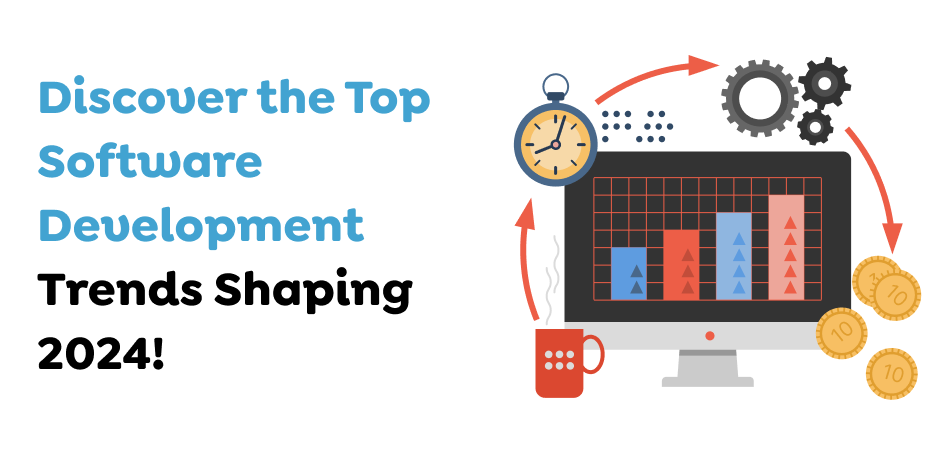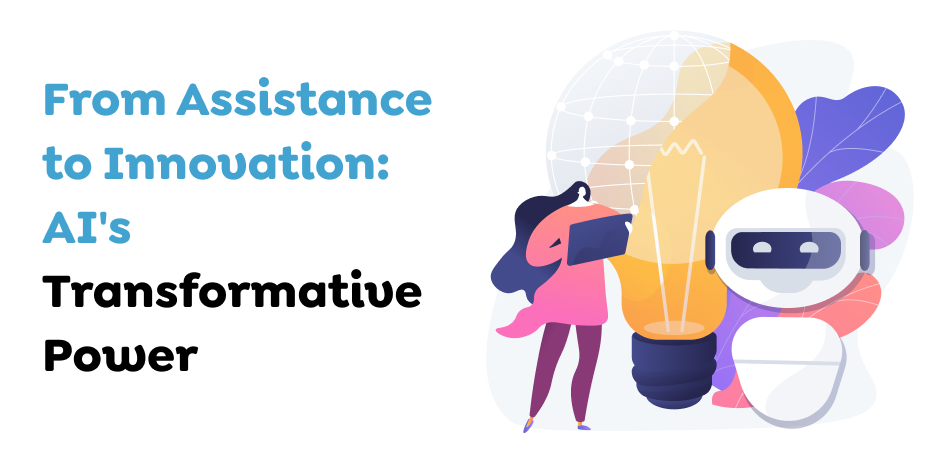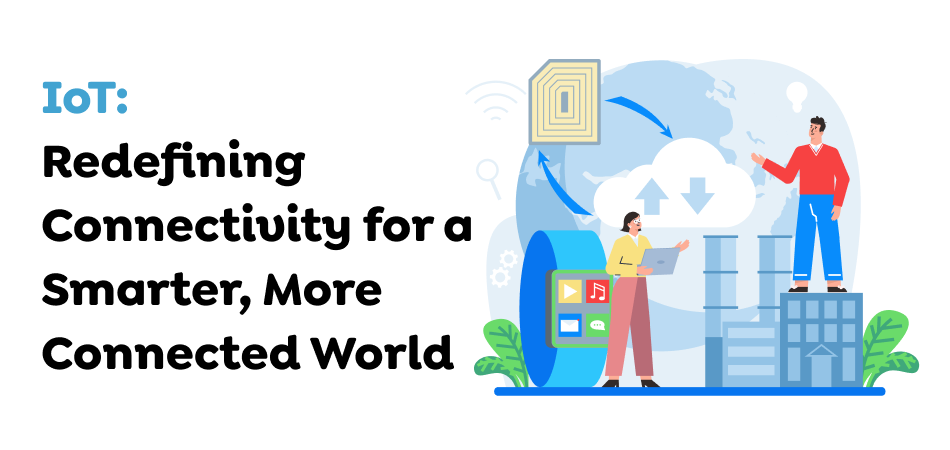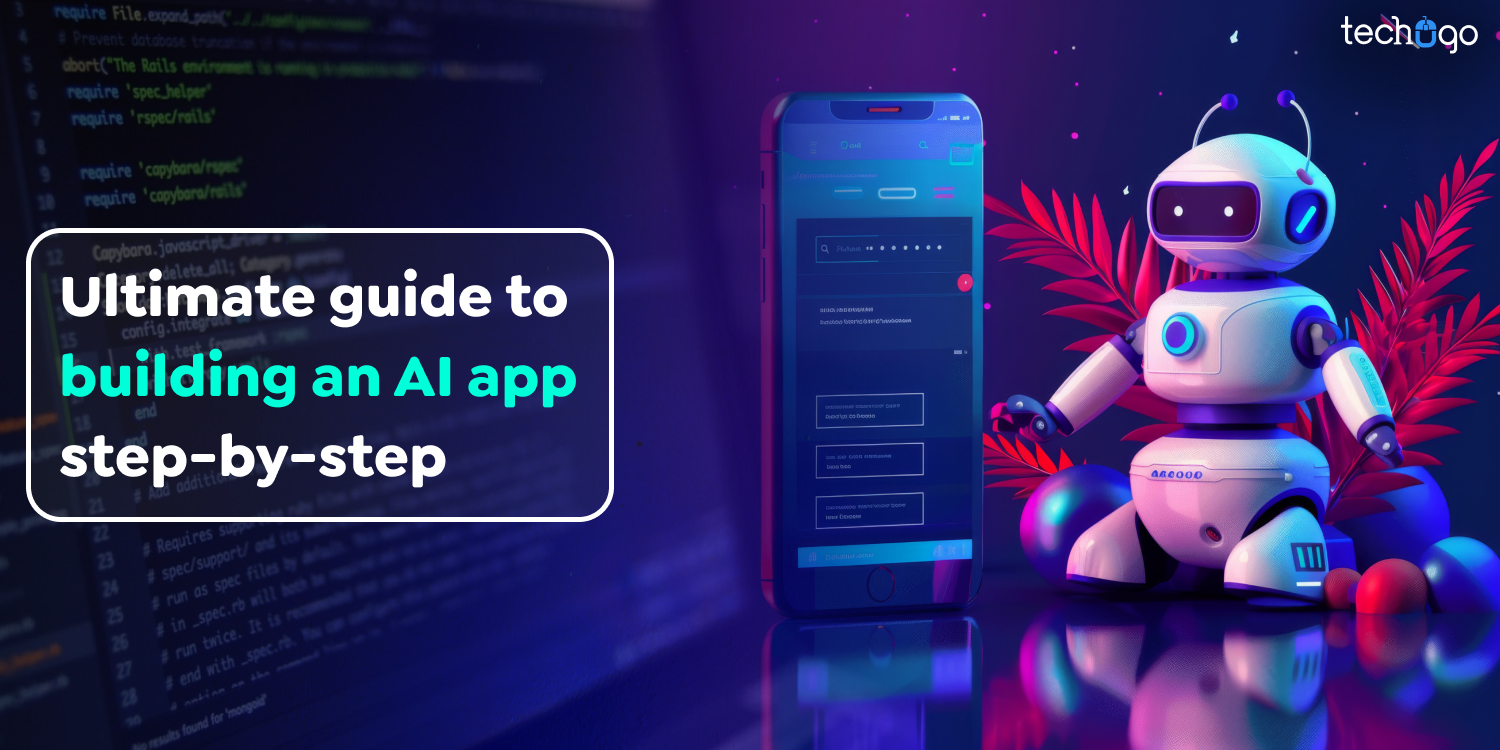13 Sep 2024
Updated on January 30th, 2025
Unlock the Future of Software Development: Key Trends in 2024
Matthew Connor

Improvements in software development technology are inescapable and persistent, constantly shaping the future of the industry. Gone are the days when it took 15 minutes to connect a trunk call; today, linking with anyone globally takes just a second. This amazing modification reflects the speed at which technology is developing. Software development is increasingly evolving as the backbone of the digital world, pushing invention and efficiency across various domains.
For those who keep a sharp eye on the latest trends and updates in software technologies, tomorrow holds immense opportunities. With 2024 on the horizon, remaining updated with the latest expansions in software technology is necessary. That’s why we’ve gathered a list of the top emerging trends that will shape the software development landscape this year. In this blog, we’ll delve into these recent trends, delivering insights into what the future has for the software industry.
So, let’s analyze the cutting-edge software development trends of 2024 and see how a forward-thinking software development company can leverage these improvements to drive business success and innovation!
Top 18 Software Development Trends to Watch in 2024

1. The Rise of Large Language Models in Development
Large Language Models (LLMs), such as GPT-4, LLaMA, and BERT are revolutionizing software development by making it easier and faster to work on. They help in developing low or no-code options in platform implementation so that other people, not necessarily developers, can build applications. Nevertheless, LLMs help software architects introduce perspectives that allow them to examine the systems, identify problems, and improve decisions. Documentation of code has also been enhanced in terms of clarity and accuracy in producing efficient code which is included in software development.
2. Leveraging OpenAI for Smarter Software Solutions
The understanding of the appended impact of emerging AI technologies has been revealed by the rapid promotion of ChatGPT in software development. OpenAI has enabled many innovations in several fields with NLP-based applications, computer vision, and recommendation systems, among others. These AI capabilities could be implemented in healthcare, e-buying and selling, and financial industries frontlines to enhance new possibilities, and decrease the time required for application development, and consequently, the cost, thus increasing the positive impact of such applications developed by a software development company.
3. Artificial Intelligence: Transforming Assistance and Beyond

The change in AI is phenomenal and there has been a considerable improvement in machine learning, deep learning, and natural language processing. In various industries routine tasks have been computerized by artificial intelligence. This change is most prominent in the development of mobile applications where the incorporation of AI was able to enhance the user interface and reduce the number of errors that lead to the creation of smarter mobile applications.
4. Embracing Low-Code Platforms for Faster Development
Low code and no code has become increasingly popular with its usage being increased further during the period of COVID-19 pandemic. These platforms enable developers to design applications with minimal coding or with very simple lines of code to write. Hence, this approach shortens development cycles, reduces reliance on skilled personnel, and helps businesses respond to market changes which are considered to be the key trend in 2024.
5. Human Augmentation: Embedding IT Systems into Human Life
The concept of human augmentation, reminiscent of sci-fi scenarios like Ironman, is becoming a reality. Some applications include wearable technology that’s being applied in manufacturing industries that are being used in healthcare industries. It has to be noted that all these innovations are supposed to improve the human condition by providing physical and cognitive upgrades that may radically alter how we interface with technology in everyday experience.
6. Augmented Reality: Still Making Waves
Augmented Reality (AR) remains one of the most important technologies in the modern world. It is used in retail business and production facilities. AR technology is useful in e-commerce ads and social media filters as it adds a digital layer to the reality space, thus improving the user experience. The continuous growth of AR indicates that this trend is going to be popular in the future.
7. Virtual Reality: A Gateway to Immersive Experiences
Virtual Reality (VR) has been a key component in the gaming and entertainment industry as it offers first-person experience. It is not only in the field of gaming but education and business simulation training is getting revolutionized by VR. In the future, the spectrum of application areas of VR will only rise, thus further supporting the position of this technology in the sphere of creative technologies.
8. Mixed Reality: Merging the Real and Virtual Worlds
Mixed Reality (MR) is the actual mix of AR and VR where the real world and the virtual world are merged. A software development company incorporates such features which makes this technology a game changer, especially in areas like real estate and complex industrial processes. MR is capable of reinventing the way companies manage their relations with customers and train their employees, which makes it a trend to monitor.
9. Cloud Solutions: Moving Beyond On-Premise Infrastructure
The journey towards cloud-based solutions is on the rise due to flexibility, scalability, and cost efficiencies among the driving factors. With the cloud, business people are in a position to access computing resources at will, thus demanding minimal physical infrastructure. The progression to distributed cloud systems also improves data availability and integration and thus today’s software development depends on cloud solutions.
10. Internet of Things (IoT): Connecting the World

IoT has embedded itself in everyday life, from smart home devices to connected vehicles. Enabling the exchange of simple data between objects of devices for a smarter environment the interoperability of this technology. The integration of IoT with AI and big data is making a significant impact in different fields and industries today such as in the healthcare sector, that offers virtual consultation and at-home monitoring of patients’ health. Another indication of the importance of IoT in designing the future is the connection of IoT with the actions of smart cities.
11. Big Data: The Need for Enhanced Security
While big data is no longer an experimental process but a core business asset that enhances user interfaces, however, with more information being accumulated key issues emerge like privacy and security issues. Businesses need to protect the data because it helps retain customers and meet the business’s legal obligations. The emergence of data as a service (DaaS) models contributes to the increasing effectiveness of data management in the software development approach.
12. Blockchain: Expanding Beyond Financial Services
The concept of blockchain has its origin in the finance sector and its benefit in other sectors like healthcare and supply chain is now gradually rising. This confirms that it is secure and transparent, and thus can be a useful tool for ensuring businesses want to improve their data integrity and cut on cases of fraud. The use of blockchain technology is expected to grow and intensify in the coming years specifically in the creation of decentralized applications (dApps).
13. Progressive Web Apps (PWA): The Future of Lightweight Applications
Progressive Web Apps perfectly blend website and mobile application experience. It is also easy to develop and maintain which makes it desirable for developers as well as business people. Other than the above-mentioned benefits PWAs offer further edge including the capability of working offline and sending push notifications with less coding implementation. This technology is rapidly finding its way into many organizations to enhance users’ experience and loyalty.
14. Automated Code Reviews: Enhancing Development Efficiency
Code review that is automated is among the tools that have become indispensable to developers. These tools are used in understanding code through the incorporation of AI to identify frequent mistakes and flaws so that developers can concentrate more on other aspects. Code reviews as a part of automation increase the security level of applications, and decrease the number of bugs and defects while increasing the speed of a development phase, thus, code reviews as an automation tool are beneficial for development teams.
15. Distributed Infrastructure: Decentralizing Data Storage
The use of distributed architectures is changing how data is managed by organizations. When data is distributed at many places, it becomes easier to access and the response time can be made less. This approach supports the development of robust, scalable applications and offers greater flexibility in managing IT resources. Distributed infrastructure is particularly beneficial for industries that require real-time data processing and analysis.
16. Modernizing Legacy Systems: A Necessary Evolution
Outdated legacy systems can hinder innovation and pose security risks. Updating these systems is crucial for organizations to maintain their stance in the market amid the shift to the digital economy. The change to new and more integrated solutions provides better and faster operation, less risk, and easier implementation of new technologies. This trend is therefore informing the need for more flexible, adaptable software development processes.
17. Microservices Architecture: Building Scalable Applications
Microservices architecture is slowly becoming popular due to the chance it brings in the development of large applications. Applications divide into smaller and independent services, and therefore distributed changes are simple to do and can be scaled if needed. This approach increases the modularity, improves the robustness of the solution, and speeds up the implementation, that is why this is one of the trends in software engineering.
18. Implementing DevSecOps: Enhancing Security and Speed
The primary objective of introducing DevSecOps is to avoid expensive and time-consuming fixes that often arise after software deployment. By integrating security early in the process, DevSecOps enables faster software development without compromising security. DevSecOps is a technique based on implementing security solutions from the time the idea of a particular software is developed. Not only does implementing DevSecOps result in reduced expenditure but it also means faster time to market for projects.
Moving forward, let’s explore how Techugo’s innovative approach and expert team can turn your software development challenges into opportunities for success.
Why Choose Techugo for Your Software Development Needs

Selecting Techugo, a custom software development company in Toronto means aligning with a team that merges innovation, expertise, and a client-centric approach. Techugo is an expert at leveraging the latest technologies to develop custom software, mobile applications, and digital platforms tailored to satisfy your business requirements. Whether you are a startup or a large company, Techugo’s emphasis on digital creation guarantees that your project is not only applicable but also scalable, secure, and future-proof.
Moreover, Techugo stands out for its dedication to quality and clarity throughout the development process. By embracing agile methodologies, a software development company guarantees a seamless and efficient workflow, permitting constant feedback and collaboration. This method not only compresses development cycles but also guarantees that the final product aligns perfectly with the client’s vision and goals. With Techugo, you gain more than just a software development service; you gain a strategic partner committed to turning your visions into successful, high-performance digital solutions.
Conclusion
In conclusion, it is necessary to state that software development is expanding at a considerable pace. The future trends of the technology world ranging from Large Language Models and OpenAI initiatives, going down to low-code platforms, and the continued evolution and expansion of Augmented Reality and Virtual Reality are anchored on efficiency, scalability, and enhancing the performance of the individual user. These enhancements when combined emphasize the importance of regular updates on new technologies to support sustained competitive advantage. From the given trends, a progressive software development company can potentially apply them to advance development and create extraordinary solutions that satisfy the constantly shifting demands of the customers.
The right selection of the software development company in Canada is critical to success in this volatile environment. Due to Techugo’s focus on innovation and client-oriented services, it is ready to help enterprises take advantage of these technologies. Focusing on digital transformation and adopting contemporary approaches like DevSecOps, Techugo understands that projects are safe, effective, and compliant with the tendencies of today. Approaching a firm that understands the dynamics of contemporary software development will thus be the core strategy of establishing new opportunities and attaining sustainable growth online.
Get in touch with us today to start your journey towards innovation and excellence.
Get In touch
We are excited to here from you and let’s start something special Together. Call Us for any inquiry.
Write us
sales@techugo.caJust a call away
About you




